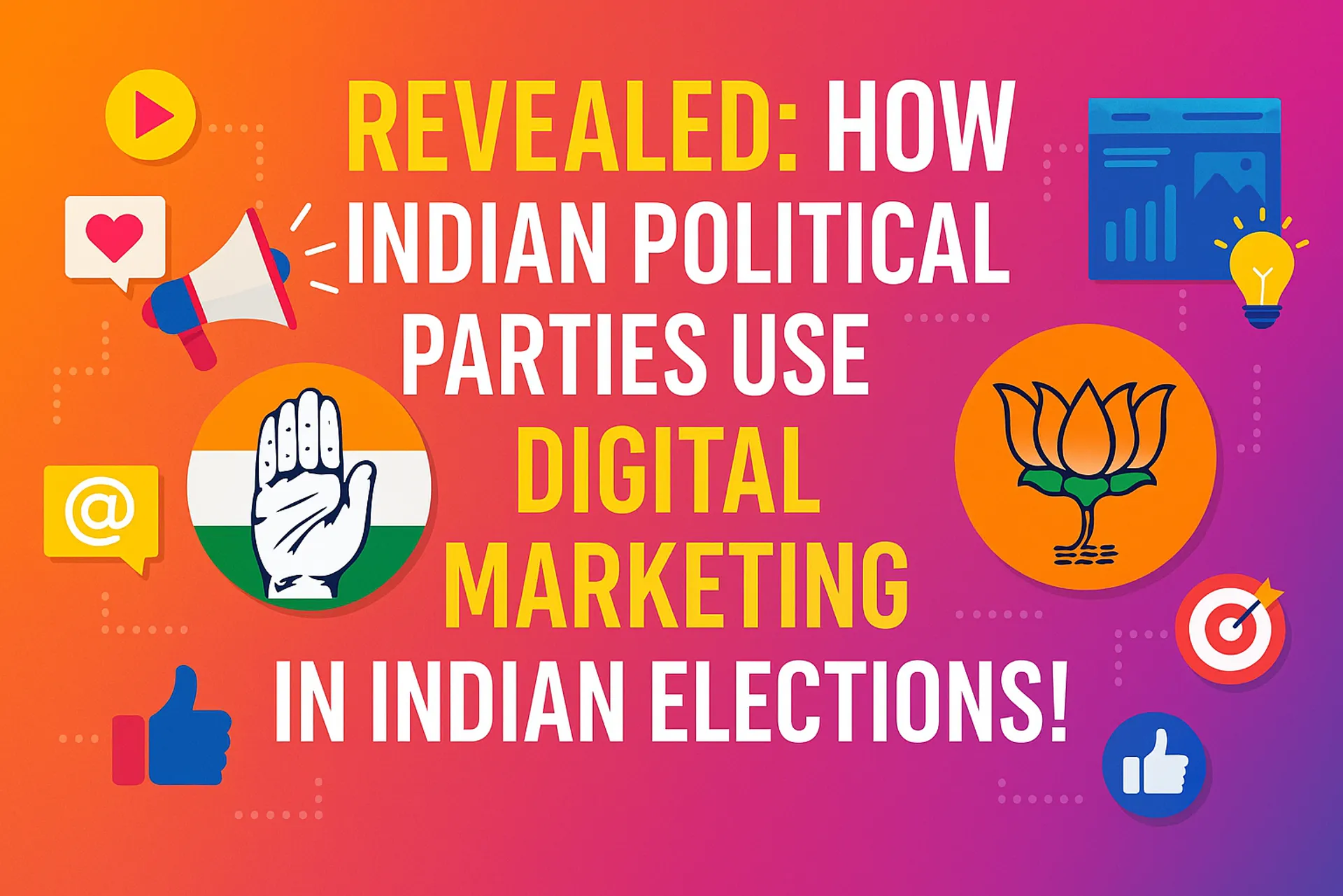Why Your Website Lost Traffic After the…
Seeing an unexpected drop in your website…

Digital marketing has become the most powerful weapon in modern election campaigns of top Indian political parties.
By spending big on digital marketing in Indian elections, Indian political parties have drastically changed their campaign tactics in the modern era. With more than 800 million Indians using the internet and a rapidly expanding social media following, digital platforms are now crucial for voter mobilization, political outreach, and engagement.
From social media campaigns to targeted advertisements and data-driven strategies, digital marketing is playing a key role in shaping election campaigns in India. Let’s get to know about it in detail through this highly engaging blog.

In the past, traditional campaign techniques like rallies, posters, door-to-door meetings, and television commercials were used in Indian elections. However, the electoral landscape has changed due to the digital revolution. Political parties are now investing significantly in social media marketing strategies to better engage and influence voters.
The following are important factors influencing the shift towards digital marketing in Indian elections:

Social media in Indian politics has become the backbone of political marketing today. Leaders and parties maintain up-to-date accounts on sites like Facebook and Instagram, showcasing their political speeches, live sessions, and advertisements.
Political parties collaborate with social media influencers, regional content creators, and meme pages to shape public perception. Meme marketing has gained traction as an effective way to connect with young voters in a humorous and engaging manner.
Political parties spend money on the following to improve their search engine rankings:
Even though email and SMS marketing are old election campaign digital strategies, they are still helpful for sending customized messages and policy updates.
Dedicated mobile apps are launched by political parties to give voters access to speeches, party manifestos, and real-time party updates. Chatbots with AI capabilities help voters with questions about candidates, polling locations, and other topics.
Digital platform crowdfunding has become more prevalent in Indian politics in the recent past. Political parties use digital payment gateways to receive donations from supporters.

While digital marketing has transformed election campaigns, it also comes with its own challenges:
The role of digital marketing in Indian elections will continue to grow with emerging trends such as:

Making use of digital marketing in Indian elections is no longer an option but a necessity for political parties. From social media influence to AI-powered voter outreach, digital platforms and tools have become vital for influencing public opinion and election results in the country. However, protecting data privacy and ensuring ethical use are essential at the same time to avoid the spread of fake narratives and misinformation.
If you want to leverage the immense power of digital marketing for your business, contact our digital marketing experts on +91 8989080822 for a Free Strategy Call. Let us know your requirements and expectations, and we will develop an effective digital roadmap to help achieve your business goals!
Imagine ranking #1 on Google… and still…
Influencer with Millions of Followers? Totally Overrated…
Google Changed the Search Algorithm (Again) —…
Not Your Usual Women Influencers! This Women’s…
Valentine’s Day is around the corner, and…
“Content marketing is really like a first…
Interested in trying out digital marketing for…
Looking to increase your product/service purchases online…
WhatsApp us